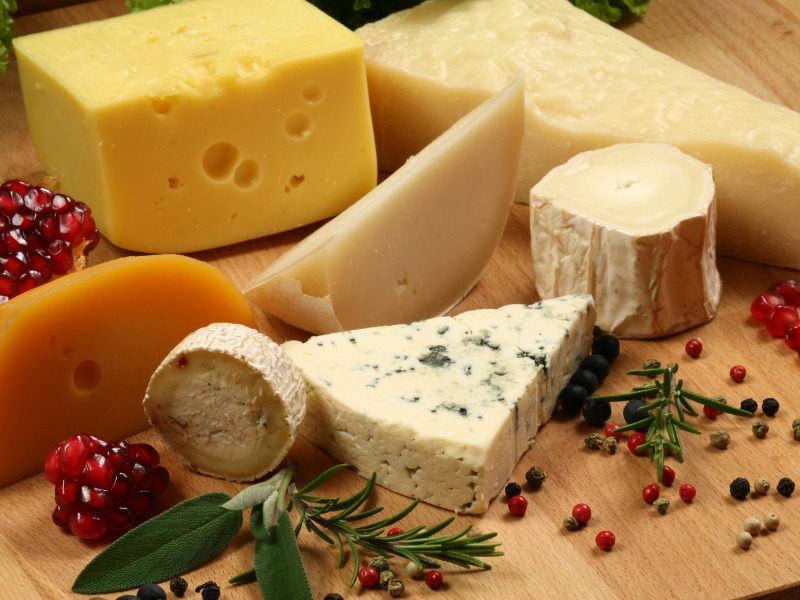35 Types of Cheese
Did you know? Cheese is a delectable gem in the culinary industry dating back to 8000 BC. Used by cultures worldwide, cheese is one of the most common baking ingredients loved by both amateurs and professionals. But with hundreds of types of cheese available, which ones stand out?
In this post, we’ll talk about the most common types of cheese worth checking out. We handpicked these cheeses based on their popularity and flexibility. So without further ado, here are the types of cheese every baker must know.
Types of Cheese
- Cheddar
- Mozzarella
- Parmesan
- Brie
- Blue Cheese
- Feta
- Swiss Cheese
- Camembert
- Gouda
- Roquefort
- Monterey Jack
- Havarti
- Cotija
- Ricotta
- Muenster
- Provolone
- Colby
- Pepper Jack
- Jarlsberg
- Stilton
- Gruyère
- Manchego
- Asiago
- Limburger
- Taleggio
- Pecorino Romano
- Gorgonzola
- Comté
- Cantal
- Époisses
- Chèvre
- Queso Fresco
- Paneer
- Boursin
- Raclette
Cheese reflects the richness of food and culture nurtured over centuries. Known for their diversity, each type of cheese features a unique personality, flavor, texture, aroma, and color.
Here are the 35 most common types of cheese:
1. Cheddar
Known for its sharp flavor and firm texture, cheddar is one of the most popular cheeses in the world.
While cheddar originated in Englad, its popularity spread in different countries including Italy and the United States. This lead to a vast spectrum of flavors and textures― from mild, creamy cheddar to intense, aged ones. Thanks to these variations, cheddar can be used in many dishes including ube cheese pandesal and mac & cheese.
2. Mozzarella
This classic Italian cheese boasts a springy texture and milky flavor. Often preserved in whey or brine, fresh mozzarella features a soft and moist profile.
When heated, this type of cheese easily melts and stretches, making it ideal for the iconic pull in pizzas and other baked dishes.
3. Parmesan
Also known as parmigiano-reggiano, parmesan features a hard, gritty texture coupled with a savory flavor. Due to this, parmesan is known as the “king of cheeses”.
Aside from being grated on top of delicious dishes, you can enjoy parmesan on its own. Fair, delicious warning: it has a nice crunch that compliments the cheese’s umami.
4. Brie
If you love cheese platters, you better check this type of cheese. Brie features a rich, creamy center contrasted by a white rind providing a unique texture.
Additionally, brie’s flavor intensifies as it agesmore pronoun. This produces a more pronounced, earthy undertone. Moreover, bakers often put baked brie inside puff pastry to make a decadent treat. This one often comes with a sweet compote though.
5. Blue Cheese
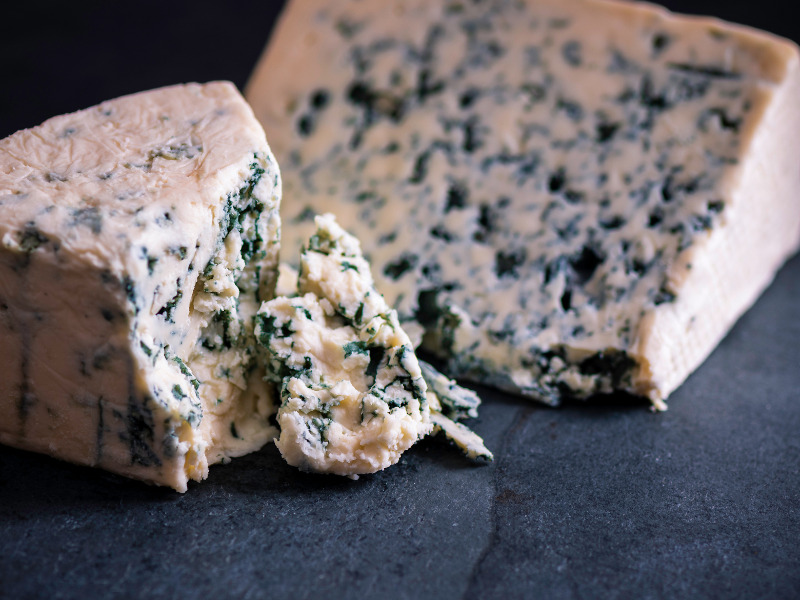
This type of cheese features bold flavor and texture because of its Penicillium strain. This strain is a mold added during the cheese-making process. But don’t feel gross about this though, because this one is safe to eat.
In particular, the mold grows within the cheese, resulting in the iconic blue veins and pungent smell. However, blue cheeses are treasured for their complex flavor, often described by experts as sharp, tangy, or a combination of both.
6. Feta
Orginating from Greece, feta is stored in brine. People know it for its white, crumbly texture and tangy taste. However, you have to be careful if you want to use pure feta, since inauthentic versions are all over grocery stores. Don’t you worry though, because they still feel fine.
Authentic feta, according to Protected Designation of Origin (PDO) standards have a minimum of 70% sheep’s milk and up to 30% goat’s milk, which contributes to its unique taste profile.
7. Swiss Cheese
The iconic Swiss cheese comes from the carbon dioxide produced by bacteria during fermentation. However, Swiss cheese’s taste can depend on how long it ages. Younger variants feature mild and creamy while older ones feature a nutty, robust flavor.
8. Camembert
Often mistaken as brie because of their similarities, camembert boasts a deeper taste with a slightly pungent smell. As camembert ages, it develops a white, bloomy crust. Meanwhile, the inside becomes creamier.
9. Gouda
This Dutch cheese has a semi-hard profile known for its buttery, rich, and slightly sweet flavor. Its smooth texture also makes it unique.
Interestingly, aging brings changs gouda. The process transforms it from a semi-soft, mild cheese to a hard, crystal-studded cheese with a strong, caramel-like taste.
10. Roquefort
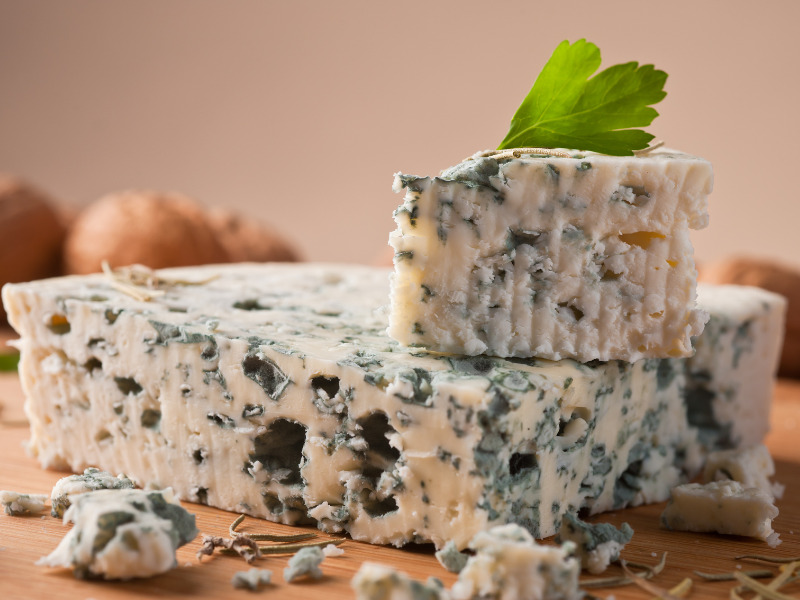
Made from sheep’s milk in the south of France, roquefort is another blue cheese many love. It’s naturally aged in the caves of Roquefort-sur-Soulzon. Here, roquefort develops its signature sharp, tangy flavor and moist, crumbly texture.
In addition, the blue-green mold and rich, creamy base provides a unique sensory experience.
11. Monterey Jack
Coming from the Mexican Franciscan friars of Monterey, California, this cheese features a creamy, buttery semi-hard profile. It also has high moisture content that melts easily.
In addition, its smooth and dense texture and slightly tangy flavor make it perfect for quesadillas, nachos, or burgers.
12. Havarti
This famous Danish cheese features a smooth and semi-soft profile, with small holes scattered throughout. Manufacturers often age it for around three months. During this period, havarti develops a sharp, buttery, and slightly acidic taste. Due to this, havarti often comes with dill, garlic, or caraway, which adds a complex layer to its flavor.
13. Cotija
Named after the Mexican town of Cotija, this cheese has a hard, crumbly profile. As a result, cotija is a staple in many traditional Mexican dishes.
Usually aged more than 100 days, cotija has a strong, tangy flavor that the spicy and savory flavors of Mexican cuisine. This makes it a staple topping for tacos, enchiladas, and elotes (Mexican corn).
14. Ricotta
The term translates to “recooked” in Italian. Ricotta comes from the leftover whey from cheese production. It boasts a creamy, slightly sweet flavor. On top of that,ricotta has a grainy, but smooth texture.
As an incredibly versatile cheese, ricotta goes well with both sweet (like chiffon cake) and savory dishes (like lasagna or stuffed pasta).
15. Muenster
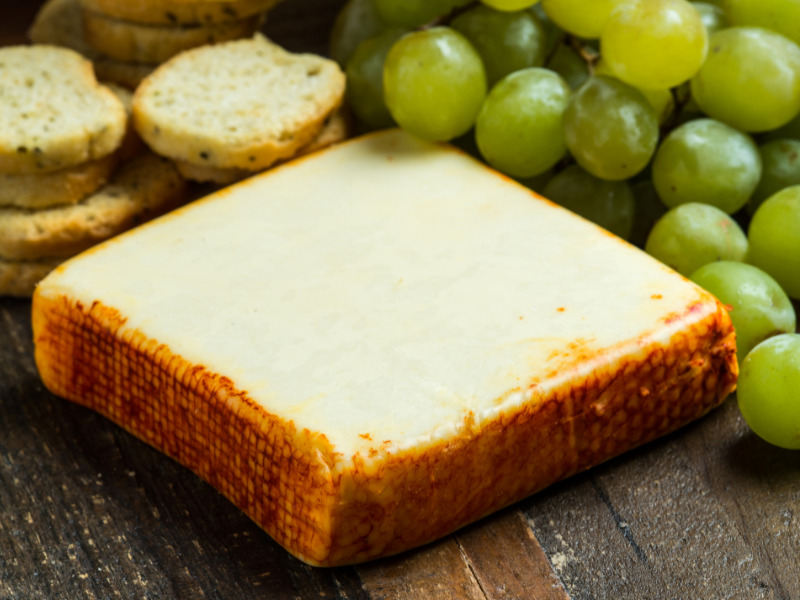
This French cheese has a semi-soft, smooth, and pale profile. Often confused with the American version (munster), this one has a mild flavor at first.
But as it ages, muenster tastes more spicy and complex, making it perfect for melting. AS a result, this cheese works well for grilled cheese sandwiches or in fondues.
16. Provolone
This type of cheese is semi-hard, yet smooth and firm. It also offers a mildly sweet, smoky flavor. Depending on how long it ages, provolone can range from mild and creamy (provolone dolce) to sharp and intense (provolone piccante).
Additionally, provolone works so well as table cheese. It also works well for sandwiches and pizza.
17. Colby
An American original, colby looks and works almost like cheddar. However, it doesn’t undergo the cheddaring process. This makes it softer, moister, and less tangy.
Colby also features a mild and creamy flavor, with a firm, open texture. As a result, it’s perfect for snacking, in sandwiches, or in any recipe that calls for mild cheese.
18. Pepper Jack
A derivative of monterey jack, pepper jack infuses its creamy, buttery base with chili peppers and bell peppers’ heat. This delicious combination makes it a staple in dishes that need a little kick, such as Tex-Mex cuisine or dips.
19. Jarlsberg
A Norwegian cheese known for its huge, round holes, jarlsberg has a yellow-wax rind and a semi-firm yellow interior. Its inside features a buttery, rich texture with a mild sweet flavor. Cooks often use it as a sandwich cheese. But jarlsberg also melts well, making it perfect for cooking savory dishes.
20. Stilton
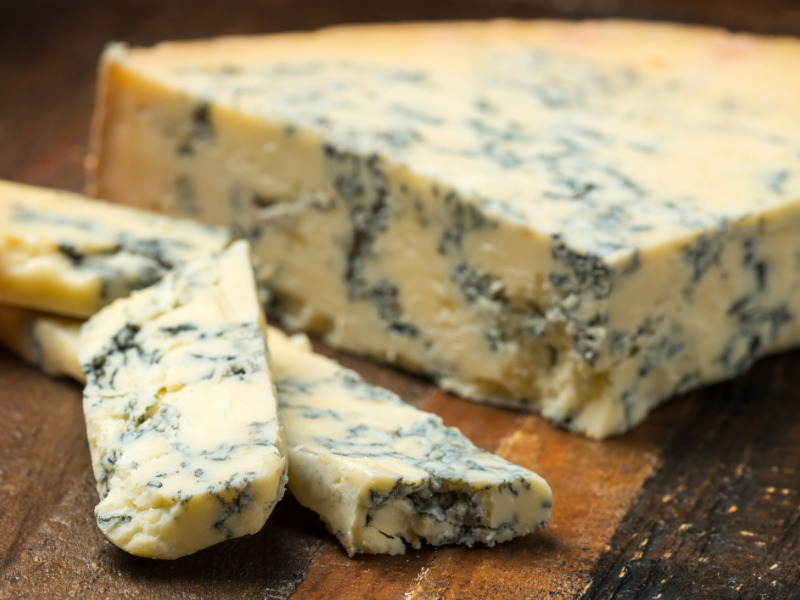
This English cheese has PDO status. This means that stilton can only be made in certain counties and under strict conditions.
This blue cheese features a rich and creamy taste with a distinctive tangy and slightly pungent profile. In addition, its blue veins contrast its creamy base. As a result, stilton works well in salads and soups. It also goes well with port wine as a classic dessert.
21. Gruyère
Named after the Swiss town of Gruyères, this hard cheese boasts a slight sweetness and nutty flavor. Known for its melting qualities, this one is crucial to dishes like fondue, quiches, and the classic French onion soup.
22. Manchego
Derived from sheep’s milk, manchego is a firm, buttery Spanish cheese. It features a rich yet distinctively salty and tangy taste. You can enjoy it with quince paste, marcona almonds, or crusty bread, making manchego a Spanish delight.
23. Asiago
This type of cheese comes from cow’s milk in Italy. It ranges from smooth and creamy to crumbly and sharp, depending on how long it ages. Additionally, its unique flavor makes it a great choice for pasta, soups, and salads.
24. Limburger
Known for its strong aroma, limburger is a semi-soft cheese from Belgium. Despite its smell, it has a surprisingly mild but distinctive flavor. As a result, limburger is a favorite among adventurous cheese lovers.
25. Taleggio
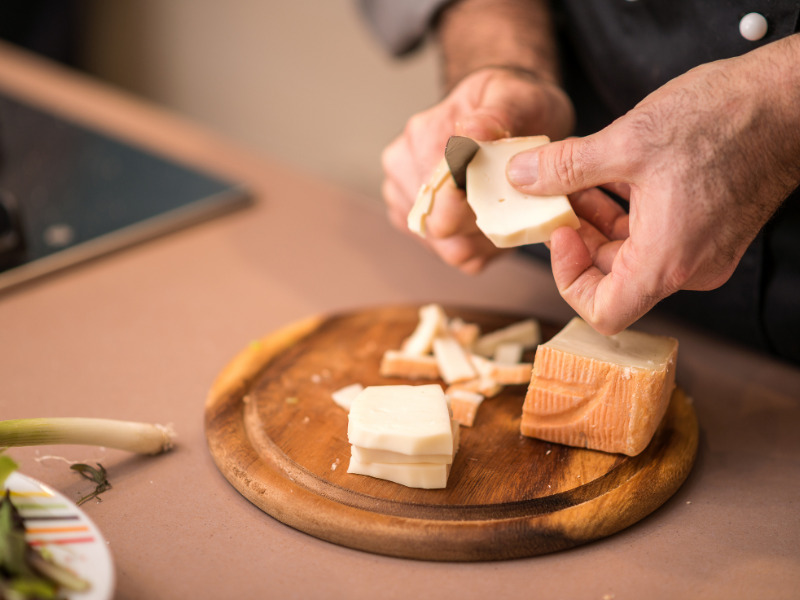
A soft, washed-rind Italian cheese, taleggio features a strong smell. However, it surprisingly has a mild, almost fruity flavor. This makes it a great addition to risotto, polenta, and pasta dishes. You can also use it as a cheeseboard centerpiece.
26. Pecorino Romano
Derived from sheep’s milk, pecorino romano is a hard, salty Italian cheese. Talians usually grate it over pasta dishes. This gives an intense flavor, making simple recipes taste extraordinary.
27. Gorgonzola
A blue-veined Italian cheese, gorgonzola combines its creamy texture with a sharp, slightly sweet taste. This special cheese works well for salads and pasta. You can also pair it with fruits and honey on a cheeseboard.
28. Comté
Known as the king of French cheeses, comté has a hard profile. Like the types of cheese on this list, it offers a complex flavor, ranging from sweet and fruity to nutty and savory. As a result, you can snack on it or melt it into gratins and fondue.
29. Cantal
As one of the oldest cheeses in France, cantal has a firm texture. Its flavor ranges from mild and milky to sharp and tangy. You can enjoy it on its own or in many recipes, including salads, gratins, and soups.
30. Époisses

Known for its aroma and creamy, melty inside, this French cheese is loved by enthusiasts for its robust flavor profile.
31. Chèvre
French for goat cheese, chèvre features a tangy flavor. It often has a creamy, crumbly texture. As a result, it’s used in various dishes, from salads to pizzas.
32. Queso Fresco
This mild, soft Mexican cheese crumbles easily. Due to tis feature, cooks use it to garnish many traditional dishes.
33. Paneer
This Indian fresh cheese features a mild flavor and firm texture. People usually use it in South Asian dishes like saag paneer and paneer tikka.
34. Boursin
This soft, creamy French cheese goes well with herbs, garlic, or pepper. It also pairs well with crackers and savory dishes.
35. Raclette
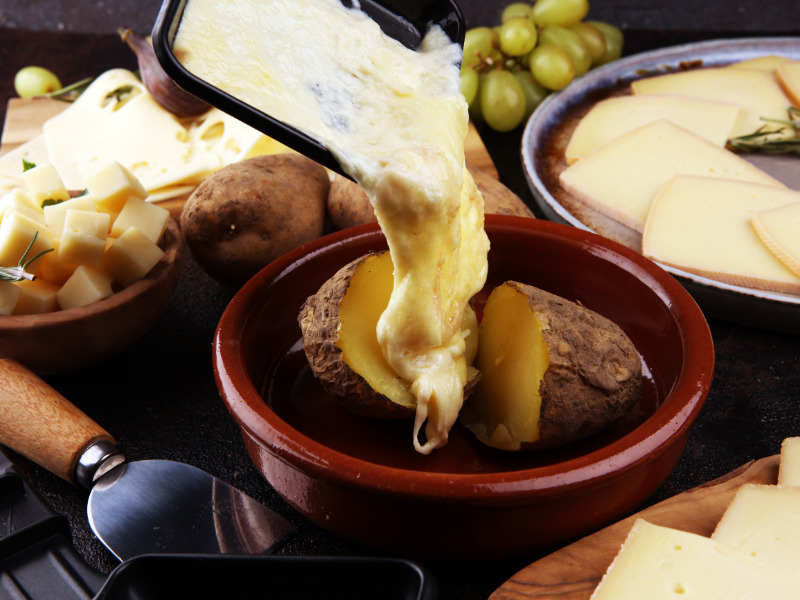
A semi-hard Swiss cheese, people love raclette for its creamy, nutty flavor. Traditionally, people melt and scrape it over potatoes and charcuterie to make a mouthwatering dish.
Frequently Asked Questions
The 10 types of cheese are cheddar, mozarella, parmesan, brie, blue cheese, feta, swiss cheese, camembert, gouda, and roquefort.
The 15 types of cheese are cheddar, mozarella, parmesan, brie, blue cheese, feta, swiss cheese, camembert, gouda, roquefort, monterey jack, havarti, cotija, ricotta, and muenster.
The different types of cheese are called cheddar, mozarella, parmesan, brie, blue cheese, feta, swiss cheese, camembert, gouda, roquefort, monterey jack, havarti, cotija, ricotta, provolone, colby, pepper jack, and muenster.
The 5 main cheeses are fresh cheeses, soft-ripened cheeses, semi-soft cheeses, semi-firm cheeses, and hard cheeses.
Conclusion
From the stretchy Mozzarella of Italy to the tangy, crumbly Roquefort of France, each type of cheese has a unique taste and texture, making the dishes they grace more delicious.
So, whether you plan on making an elaborate cheese board, cooking an international dish, or simply want to elevate a daily meal, always remember this: the right cheese can make all the difference. Happy cooking!
About HICAPS
Over the years, HICAPS has helped bakers and businesses make delicious products by offering ingredients like ChiffonAide Cake Oil, Magic Whizk Whipping Cream, Red Velvet Flavor Emulco, and Instabake Brownie Mix.
HICAPS also provides tools and resources to valued partners, such as the free “How to Increase Your Sales Amidst the Pandemic” E-book and free dealer locator that helps look for baking ingredients near me.
Want more free tips and tutorials? Follow us on Facebook at Hicaps Mktg. Corp. and on YouTube at HicapsTV.
Want to be one of our valued partners? Fill this form out. Looking forward to talking to you soon!

